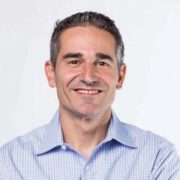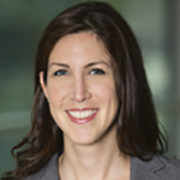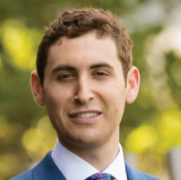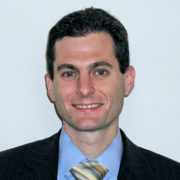Catching Up with Clinic Alums
For the vast majority of Stanford Law students, participation in a clinic has become a rite of passage, with more than three-fourths taking one of the 11 clinics currently offered. Whether engaging in direct representation, impact litigation, or working on policy initiatives, students spend a quarter fully immersed in a full-time clinic, developing crucial skills they will need when they enter practice, including interviewing and counseling clients, preparing witnesses, writing legal briefs, delivering oral arguments, researching and planning case strategy, and more. And while clinic graduates pursue many different career paths, all take with them valuable tools and experiences. Here, five alums reflect on how their clinical experience has influenced their careers—in a variety of ways.

David Gonzalez, JD ’99
For Gonzalez, Stanford Law’s Criminal Prosecution Clinic, and particularly the influence of George Fisher, the Judge John Crown Professor of Law and clinic co-director, have been indispensable to his practice. Gonzalez, along with his wife, Corinne Sumpter, JD ’99, started a criminal defense firm in Austin, Texas, immediately after graduation.
“I knew I wanted to be a trial lawyer,” he says, “and Professor Fisher provided the guidance and skills that I rely upon to this day.”
Significantly, Fisher persuaded Gonzalez that he didn’t have to wait 10 years to start trying cases. “In the clinic I learned that once you’re in the courtroom, everyone is equal, whether you’ve practiced 50 years or one year, or whether you’ve tried 100 cases or this is your first.” Gonzalez also learned the importance of the implicit norms that govern interactions among lawyers.
“Professor Fisher explained office politics, prosecutorial ethics, and the complicated relationships between lawyers, their supervisors, and judges—all of which are critical to navigating the criminal justice system.”
And, Gonzalez says, he learned about professionalism from Fisher. “He is the consummate professional and the most considerate individual I know. He taught us that it’s better to be 30 minutes early to court than one minute late. That has become part of my DNA.” Of course,
Gonzalez says, the actual practice—“making arguments over and over again”—was invaluable. But equally important were the lessons learned about self-care.
“Professor Fisher emphasized that good lawyers take cases personally. He would check to see how we were doing and monitor our time management and stress levels.” Indeed, Gonzalez’s firm has two social workers on staff to help with these issues. Based on his experience, Gonzalez believes that every law student should spend time engaged in some form of clinical education. “How else can you really learn how to practice law?”

Melissa Magner, JD ’08
When the opportunity arose to participate in the inaugural semester of the Organizations and Transactions Clinic during spring semester of her 3L year, Magner was ecstatic.
“SLS was a pioneer in having a non-litigation clinic,” she says. “It was a great fit with my interests. I always wanted to be a transactional lawyer.”
Since graduation, Magner has followed that path through a variety of positions, including as an associate at Latham & Watkins working in private equity and M&A; an in-house lawyer for Halcyon Asset Management (a hedge fund that had $12 billion of assets under management [AUM], now known as Bardin Hill Investment Partners); and her current position as in-house lawyer covering digital platforms at BlackRock, Inc., the world’s largest asset manager with more than $6 trillion in AUM.
Throughout her career, Magner has stayed in touch with clinic director Jay Mitchell, whom she credits with providing essential lessons for her practice.
“Professor Mitchell is hyper-organized and detail-oriented, but also focuses on the big picture.” Critically, Magner says, “He taught us to be really, really careful drafting contracts but also to realize the importance of internal and external communications.”
It’s the latter advice that especially resonated with Magner. “Not to downplay the legal analysis, but we learned that the way you communicate can make the difference in whether the client, or someone else, actually reads and implements your suggestions. You will be judged by it.” To that end, she follows Mitchell’s emphasis on style.
“Particularly over email, five long paragraphs might bore and lose your audience. He taught us how to effectively sign-post by using bullet points, effective headings, and highlighting, instead of uninterrupted blocks of text.”
The clinic also impressed Magner with the importance of public service. “I loved the clinic’s social impact focus and I have incorporated pro bono work into my practice—as a volunteer lawyer and, more recently, organizing a legal education lecture series for nonprofit executives—throughout my career.”

Nathan Werksman, JD ’18
Werksman was certain about two things when he went to law school: He wanted to represent people, not companies, and he would not bill by the hour, no matter what. “Being a big firm lawyer just didn’t appeal to me,” he says.
To get the relevant experience, Werksman enrolled in the Religious Liberty Clinic because, he says, “It involved representing real people.” He was not disappointed. “The greatest lesson I learned in clinic was the importance of interacting with people—my clients, opposing attorneys, witnesses, experts, and judges.”
Since graduating, Werksman has been putting these skills to good use as a plaintiff-side personal injury trial attorney with the Los Angeles firm of Panish Shea & Boyle.
“My practice is all about building relationships. I need to have rapport with my clients to be able to effectively tell their stories to a jury. And I need to develop relationships with witnesses so that they will open up to me.”
In particular, learning how to relate to people whose backgrounds are different from his has been essential.
“I remember interviewing my first clinic client, a CVS employee making around minimum wage who was forced to choose between her deeply held religious beliefs and caring for her children. Now, many of my clients are in a similar socio-economic group, worlds apart from me. Getting to know someone who is really different from you takes work, but it is key.”
Werksman says that Jim Sonne, clinic director, was an inspirational role model: “Jim is a lawyer’s lawyer. He is brilliant, works hard, and cherishes the attorney-client relationship. Jim fights for everyone and gives everything. I try to do the same.”

Eric Feigin, JD ’05
As a law student enrolled in the first-of-its-kind Supreme Court Litigation Clinic (SCLC), Feigin never imagined that his career would involve representing the United States government at the Supreme Court.
“It’s been a serendipitous set of things that have gotten me here,” he says.
Following graduation, Feigin clerked for Judge J. Harvie Wilkinson III of the U.S. Court of Appeals for the Fourth Circuit, spent a year at the Department of Justice’s civil appellate division, clerked for U.S. Supreme Court Justice Stephen Breyer, and spent two years as a litigation associate in a law firm before joining the U.S. Solicitor General’s Office in 2010. He now spends about two-thirds of his time in Supreme Court litigation, the first taste of which he got in clinic.
“It was incredibly eye-opening. It was my first exposure to Supreme Court practice—to why the Court takes cases for review and to the care and craft that go into writing Supreme Court briefs and preparing for arguments. I also was struck by the reverence that Pam Karlan [founding SCLC co-director and Kenneth and Harle Montgomery Professor of Public Interest Law] and Tom Goldstein [at the time a SCLC lecturer in law] had for the institution.”
That experience has served him well, and Feigen says that he thinks about the lessons he learned “on a daily, hourly, minute-by-minute basis.” He still remembers “sitting next to Pam at a computer, going over a brief, line-by-line.” He also recalls mooting Karlan and Goldstein.
“That really helped me learn a lot about what makes an oral argument effective,” says Feigin. He now specializes in criminal law, which has placed him on the opposite side of several cases argued by Jeffrey Fisher, clinic co-director and professor of law. And even though Fisher joined the clinic after Feigin graduated, he also has had an impact on Feigin’s practice.
“We’re friends. And I’ve learned a ton simply from the close-up opportunity to see all the ways in which Jeff is such a great advocate.”

Stacy Villalobos, JD ’15
As the child of parents who immigrated from Mexico, Villalobos came to law school interested in immigrants’ and workers’ rights. The Immigrants’ Rights Clinic was a perfect match and prepared her for post-graduate work as a Skadden fellow and her current position as a staff attorney for Legal Aid at Work (LAW) in San Francisco.
“We’re a workers’ rights organization that focuses on low-wage workers,” Villalobos explains. “We provide direct services and also do impact litigation and policy advocacy, all of which we did in clinic.” Her first LAW project involved one-on-one consultation and running clinics for immigrant women farm workers. “We handled cases involving sexual harassment, immigration retaliation, and national origin and language discrimination, and we educated workers about their rights in an ICE raid.”
Villalobos says that participating in clinic was one of her best decisions at SLS. “When I’m in a client meeting, or in a hearing, or briefing a case, I constantly ask myself, ‘What would Jayashri [Srikantiah, associate dean of clinical education, Mills Legal Clinic director, and professor of law] and Lisa [Weissman-Ward, clinical supervising attorney and lecturer] do?’”
Villalobos says what she learned in clinic has stayed with her even more than the reading she did for doctrinal classes.
“When you’re actually doing it, it’s easier to learn. Your questions aren’t just theoretical, and the relationships you foster with clients and other individuals working in the space begin to shape who you are as a lawyer. That has a long-lasting impact.”
Villalobos’s practice focuses on race discrimination in employment. As she becomes more senior, she is reaping additional advantages from her clinic experience.
“One of the benefits of the clinic is the opportunity for reflection about the work you’re doing. I’m now putting that skill into practice at LAW in making strategic decisions about the direction of our work. In doing so, my thinking harkens back to the clinic conversations we had about why we focused on the issues we did, the strategies we used to move the law forward, and how to allocate scarce resources to have the largest impact.”
Villalobos also values her continuing relationships with Srikantiah and Weissman-Ward. “I’m still in touch with them and think of them as role models and mentors.” SL
